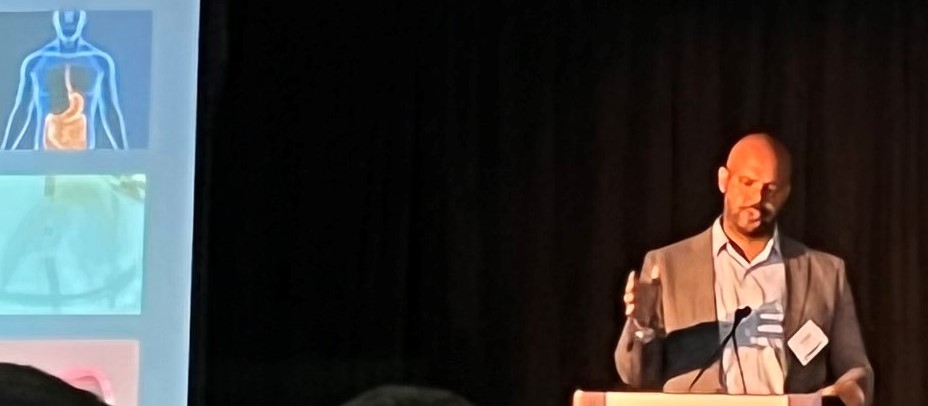Dr. Craig Munroe, Associate Chief for Clinical Innovation for the UCSF Health GI Division and a key advisor at San Francisco-based interventional endoscopy start-up Myka Labs, presented today at the American Gastrointestinal Society 2022 Tech Summit on how pancreatic cancer patients are poised to benefit from groundbreaking technology for endoscope navigation developed at Myka Labs.
For patients with gastric outlet obstruction–as seen in nearly half of pancreatic cancer patients–intervention is urgent to allow for adequate nutritional intake. The goal of restoring nutritional intake capability while sparing patients from major surgery has spurred interest in performing so-called bypass procedures not via incisions in the abdominal wall, but instead using an endoscope passed through the patient’s mouth and advanced into the stomach.
When successfully completed, endoscopic gastrojejunostomy can lead to exceptionally favorable patient outcomes. In fact, a major paper published last year that surveyed endoscopic gastrojejunostomy outcomes across a large number of major centers found that with endoscopic gastrojejunostomy, patients benefited from a full seven months without recurrence of obstruction symptoms–a stark contrast to a widely used, more conventional treatment for obstruction where recurrence occurs after only two months on average. But it is an exceptionally challenging procedure to complete successfully when performed using only conventional intraoperative imaging like endoscopic ultrasound and fluoroscopy. Another recently published paper surveyed the types of the technical failures that can occur in this procedure; technical failures that can occur include the anastomosis forming between the stomach and colon instead of the stomach and the jejunum.
As described by Dr. Munroe, with Myka’s new navigation technology, care teams will have the benefit of real-time, three-dimensional models of internal anatomy–along with their own instruments being used to perform procedures. The real-time synthetic anatomy map, produced by analysis of information streamed from an EUS scope along with miniature sensor arrays built into Myka Labs catheters used during the procedure, is output to a conventional display, where care team members can roll, pinch and zoom the real-time image to obtain an optimal viewing perspective to aid in successfully completing steps in the procedure that are particularly challenging.
The AGA Tech Summit, held in San Francisco and running from April 13 through April 15, is an annual event that brings together leaders in the GI field from academia, venture capital firms, start-ups, and others to look for ways to leverage technological advances to improve patient care.
Myka Labs, Inc., a start-up company pioneering advanced systems and technologies for less invasive interventions in the GI tract and other organ systems, is based in San Francisco, California and Boulder, Colorado.
